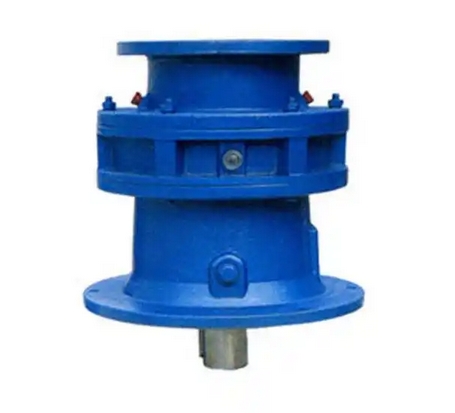When repairing the BLD8-35-45KW cycloidal reducer output shaft, what issues should be noted?
When repairing the output shaft of BLD8-35-45KW cycloidal reducer, the following issues should be noted:
Safety issue: Before maintenance, it is necessary to cut off the power supply and set up a warning sign prohibiting opening at the switch to prevent accidental power on from causing safety accidents.
Dismantling and installation
Standardized disassembly: Disassemble relevant components in the correct order, such as first removing the lubricating oil pump (only for vertical reducers), unscrewing the oil plug at the bottom of the machine seat to drain the lubricating oil, etc. When disassembling cycloidal gears, it is important to remember the position of the cross section marking letterhead for proper assembly in the future.
Avoid damage: When disassembling couplings, pulleys, and other connecting components on the output shaft, direct hammering is prohibited because the output shaft structure cannot withstand axial hammering force. Instead, screws should be screwed into the shaft end screw holes to press in the connecting components. For tighter connectors, specialized tools such as pullers can be used to disassemble them to avoid damaging the output shaft.
Correct installation: Assemble according to the reverse procedure of disassembly. When installing a new output shaft or related parts, ensure that they are installed in place, and the marking heads of the two cycloidal gears should be aligned 180 pairs or overlapped vertically. During the installation process, the mating surfaces of the parts should be coated with an appropriate amount of lubricating oil to facilitate assembly and prevent rusting.
Parts inspection and replacement
Careful inspection: Conduct a comprehensive inspection of the disassembled output shaft, bearings, gears, and other parts to check for defects such as cracks, wear, and deformation. Measure the radial clearance and axial clearance of the bearing with a dial gauge, check the radial runout and axial full runout at the gear installation on the shaft, and straighten the shaft if the deformation exceeds the tolerance.

Timely replacement: For parts that are severely damaged or do not meet requirements, such as worn bearings, cracked output shafts, deformed gears, etc., they must be replaced with genuine parts from the original factory or meet specifications in a timely manner, and inferior or mismatched parts must not be used.
Concentricity and coaxiality: During the maintenance process, it is necessary to strictly control the coaxiality between the motor shaft and the input shaft of the cycloidal reducer, the output shaft and the load shaft, as well as the coaxiality of each connecting part, to ensure that they meet the specified requirements. Otherwise, it will cause the output shaft to bear additional radial force and torque, leading to the recurrence of the fault.
Lubrication and Sealing
Correct lubrication: Select appropriate lubricating oil as required, such as EP9 # 0 extreme pressure gear oil, etc. When changing the oil, it should be done at the operating temperature of the gearbox to ensure thorough oil drainage. At the same time, the metal powder and other impurities in the gearbox should be cleaned up, and the amount of fuel added should be appropriate, keeping the oil level at the middle of the sight glass.
Good sealing: Check and replace damaged seals, such as oil seals, O-rings, gaskets, etc., to ensure good sealing of the gearbox and prevent lubricant leakage. When installing the oil seal, pay attention to the correct direction and avoid damaging the oil seal lip.

